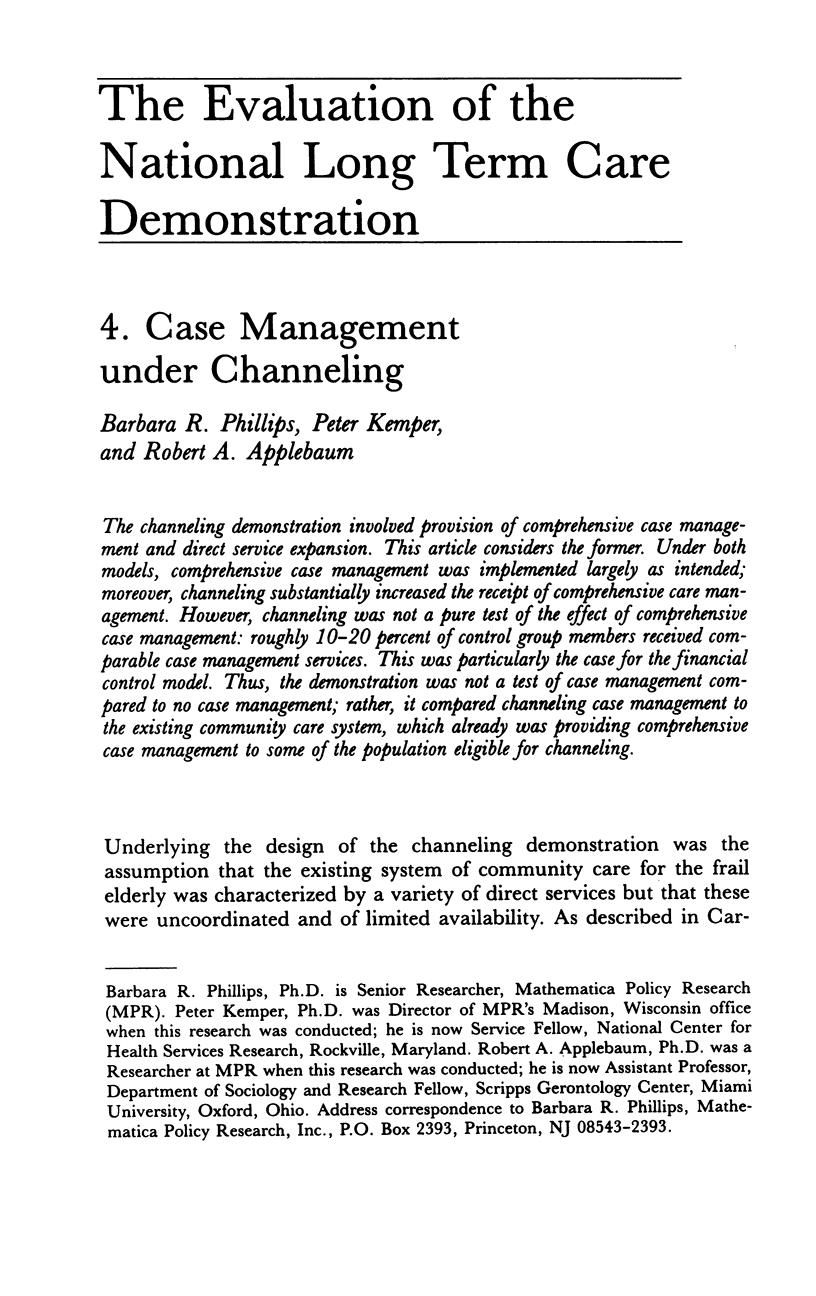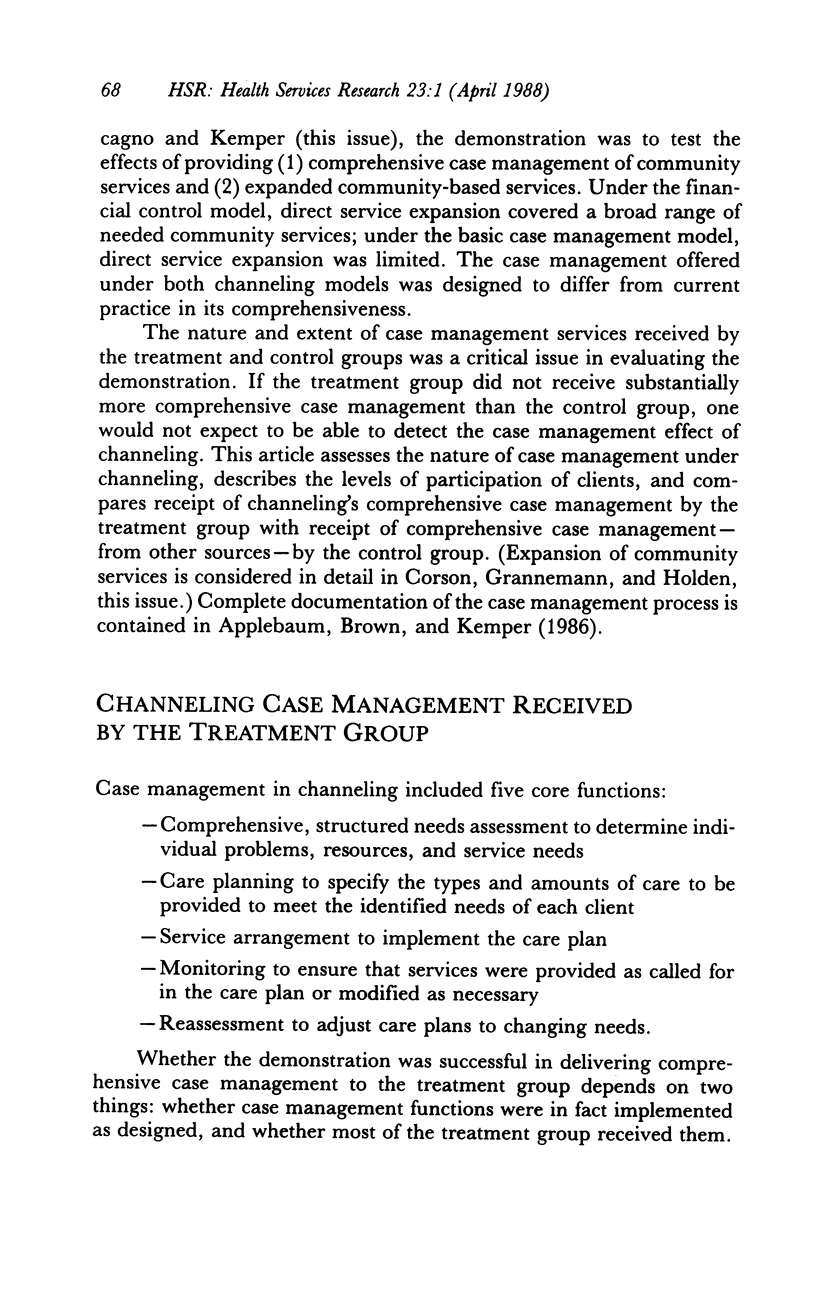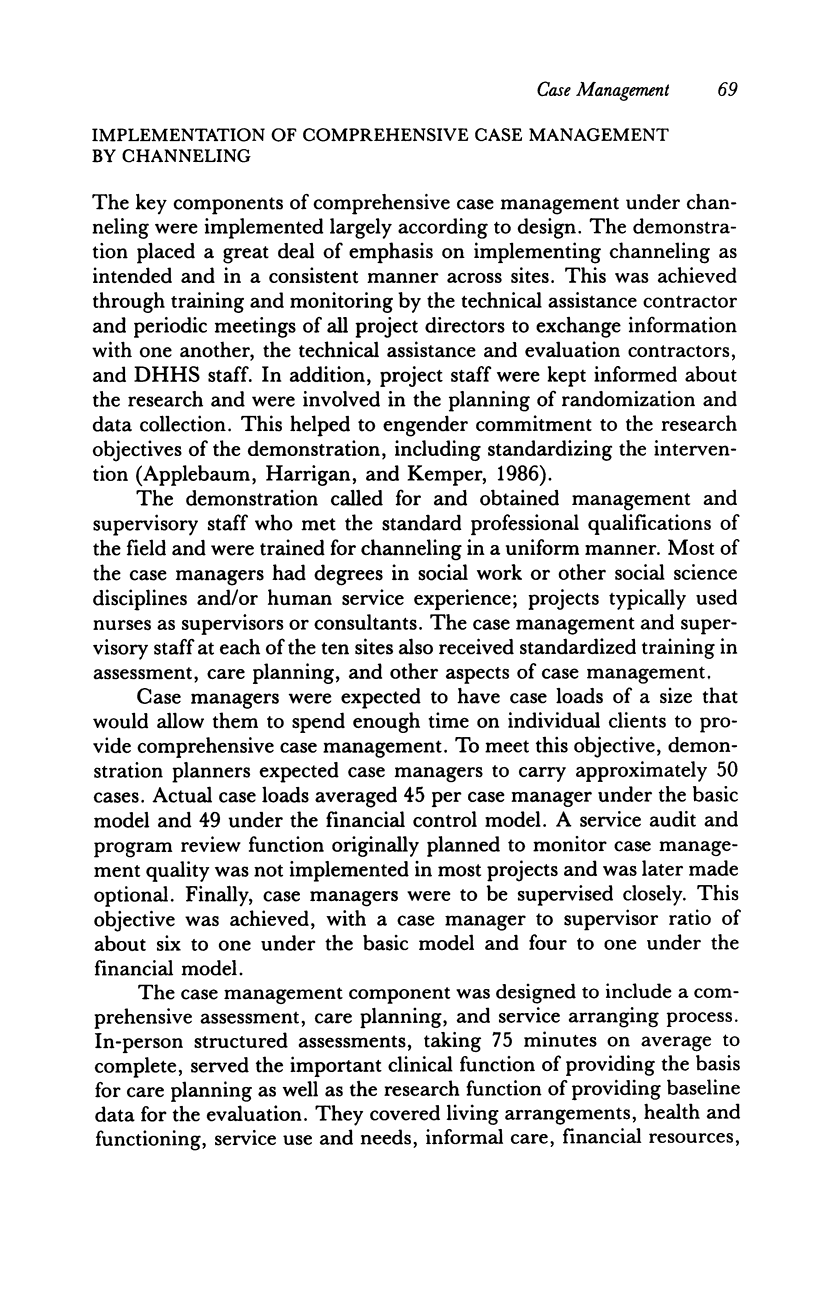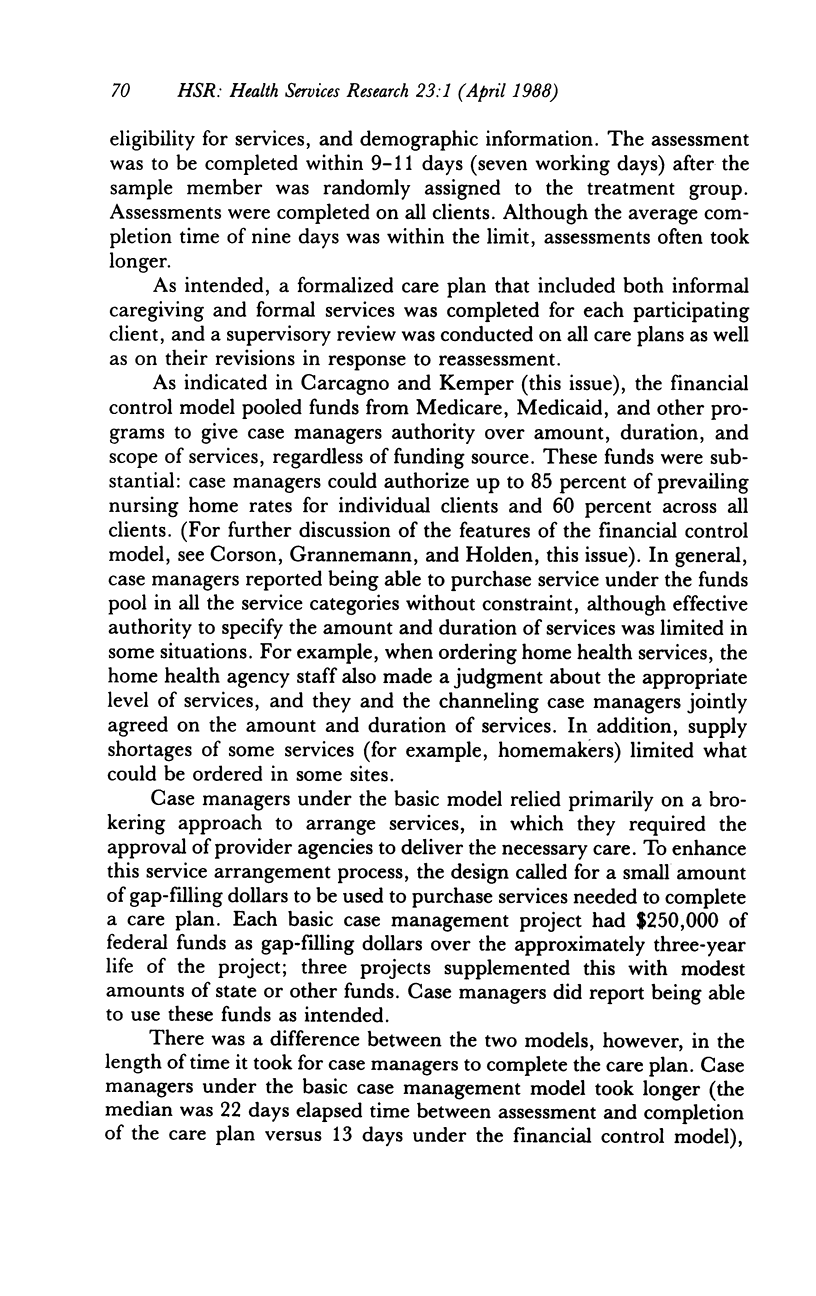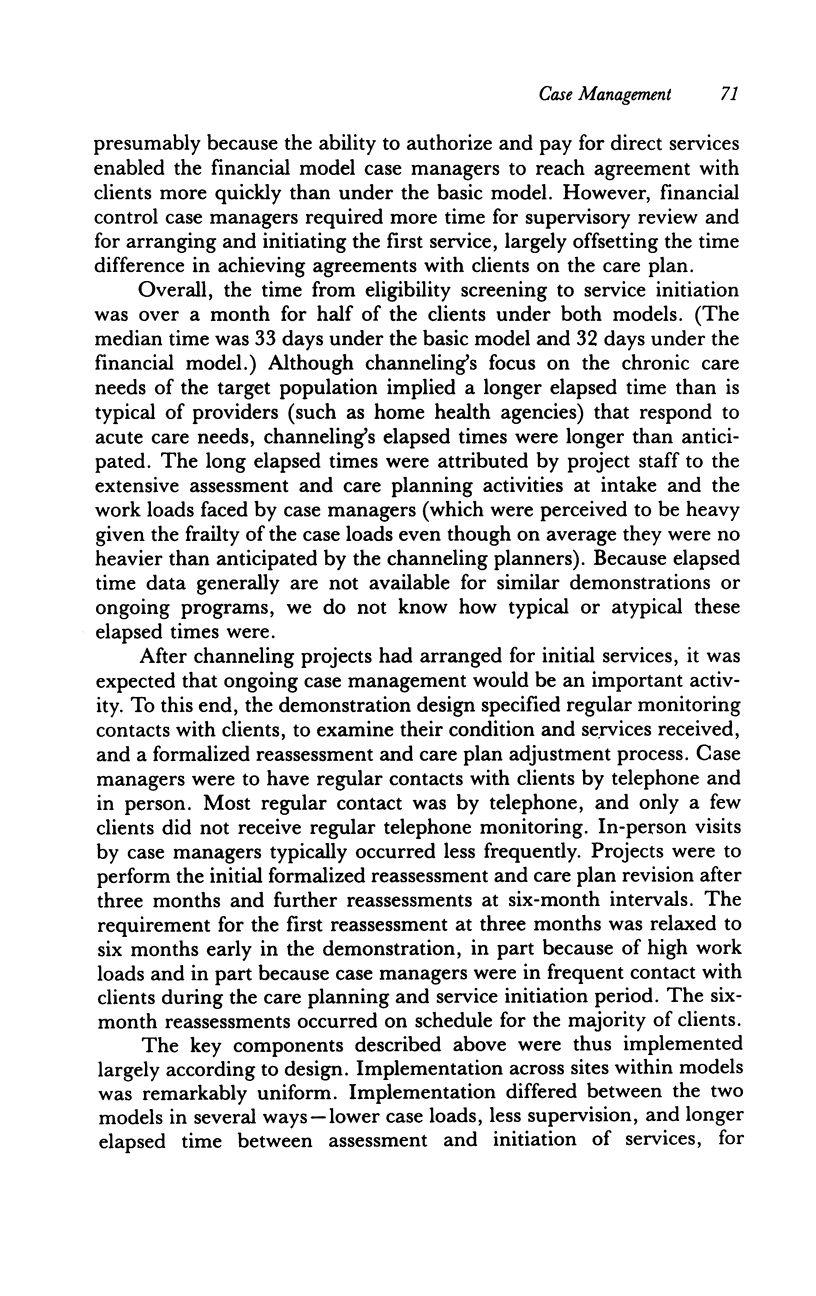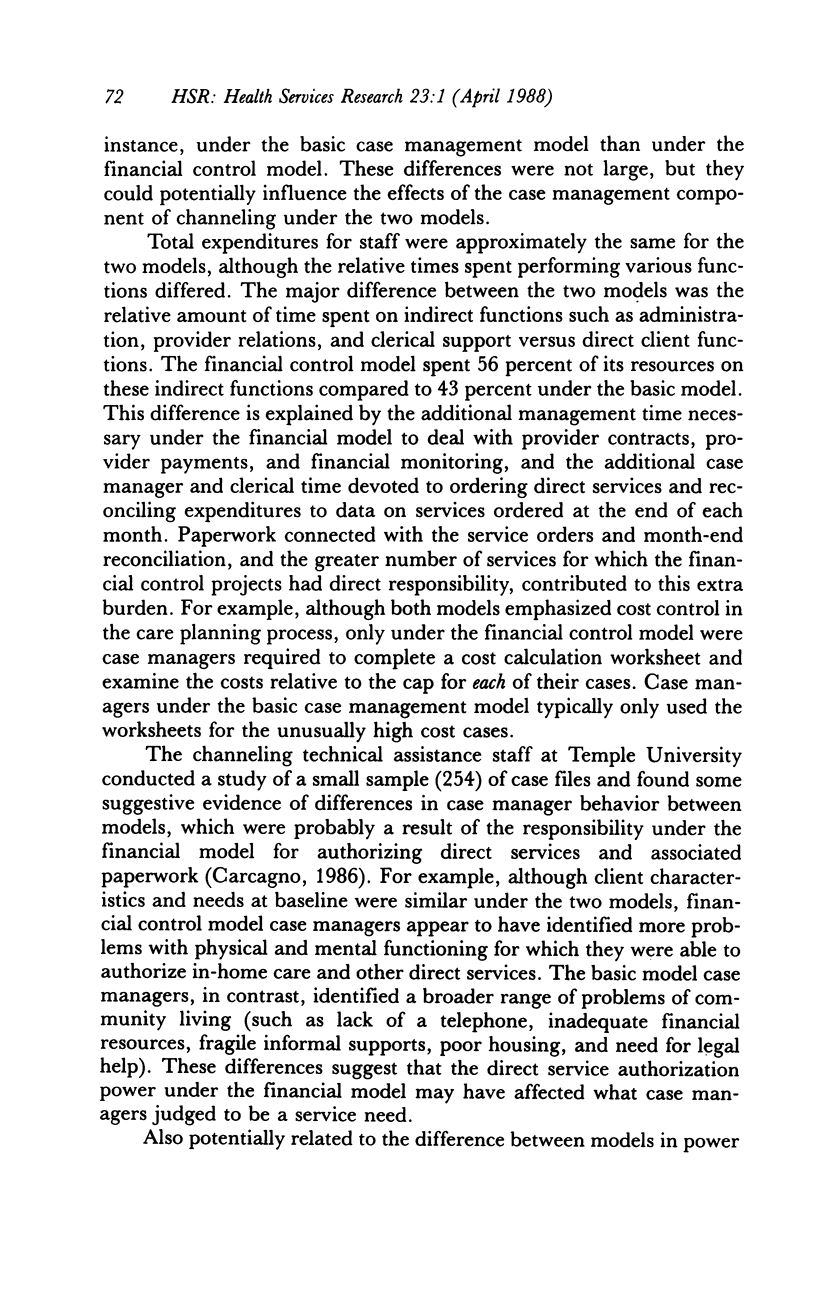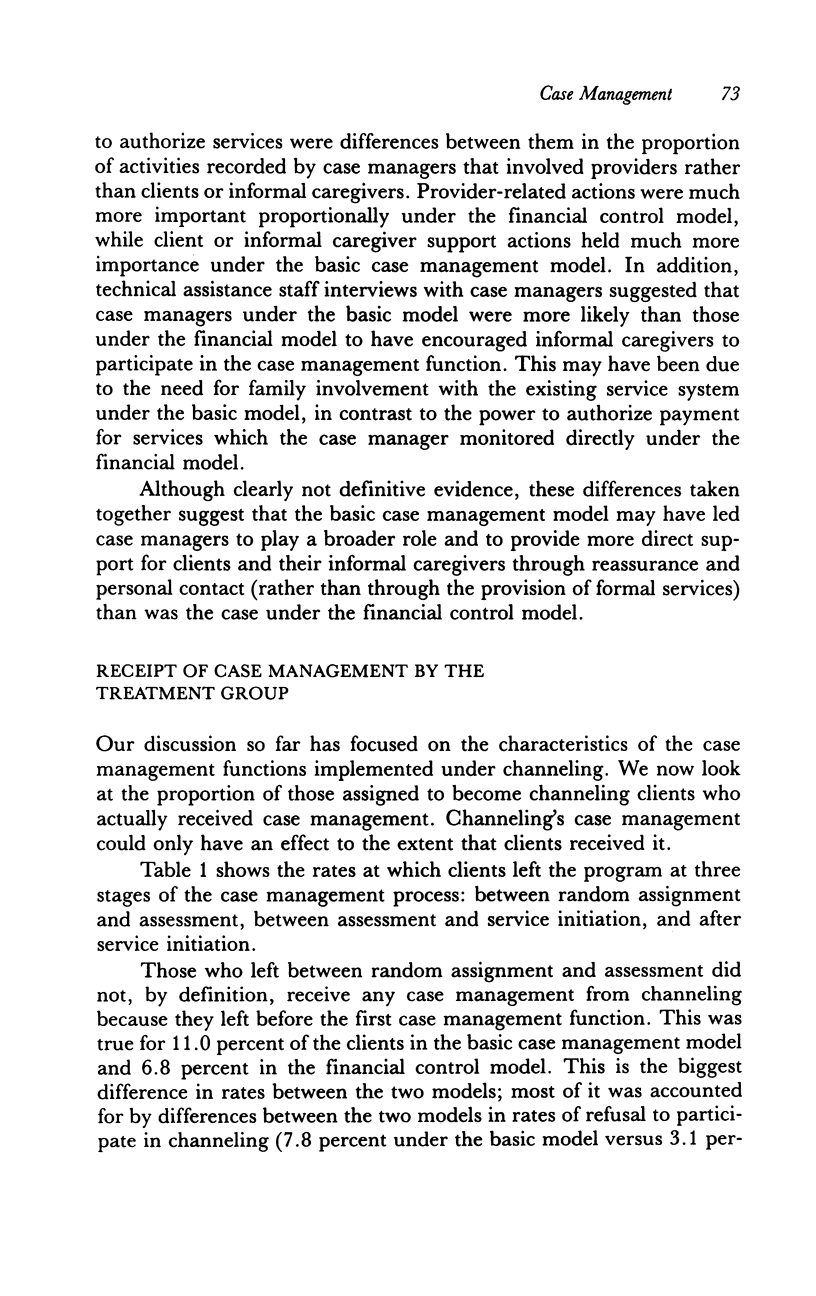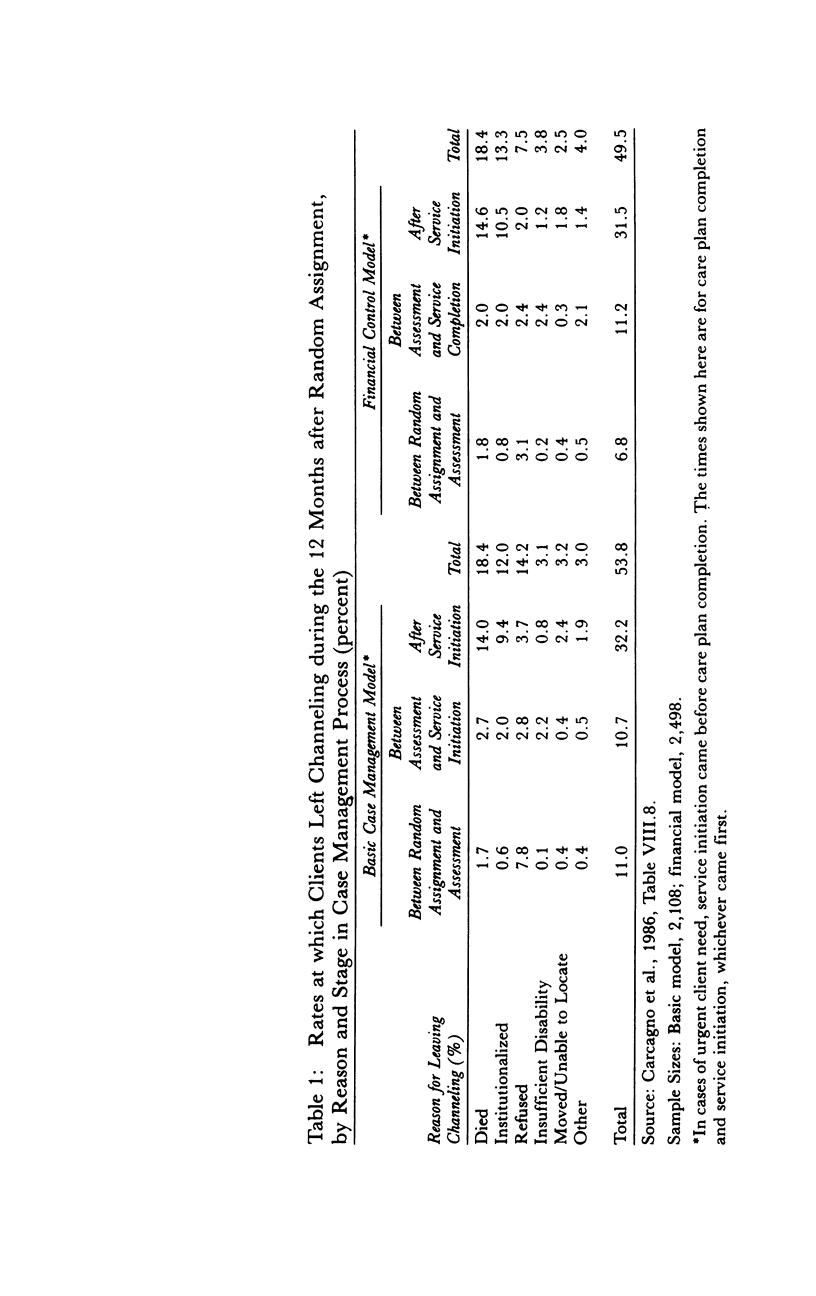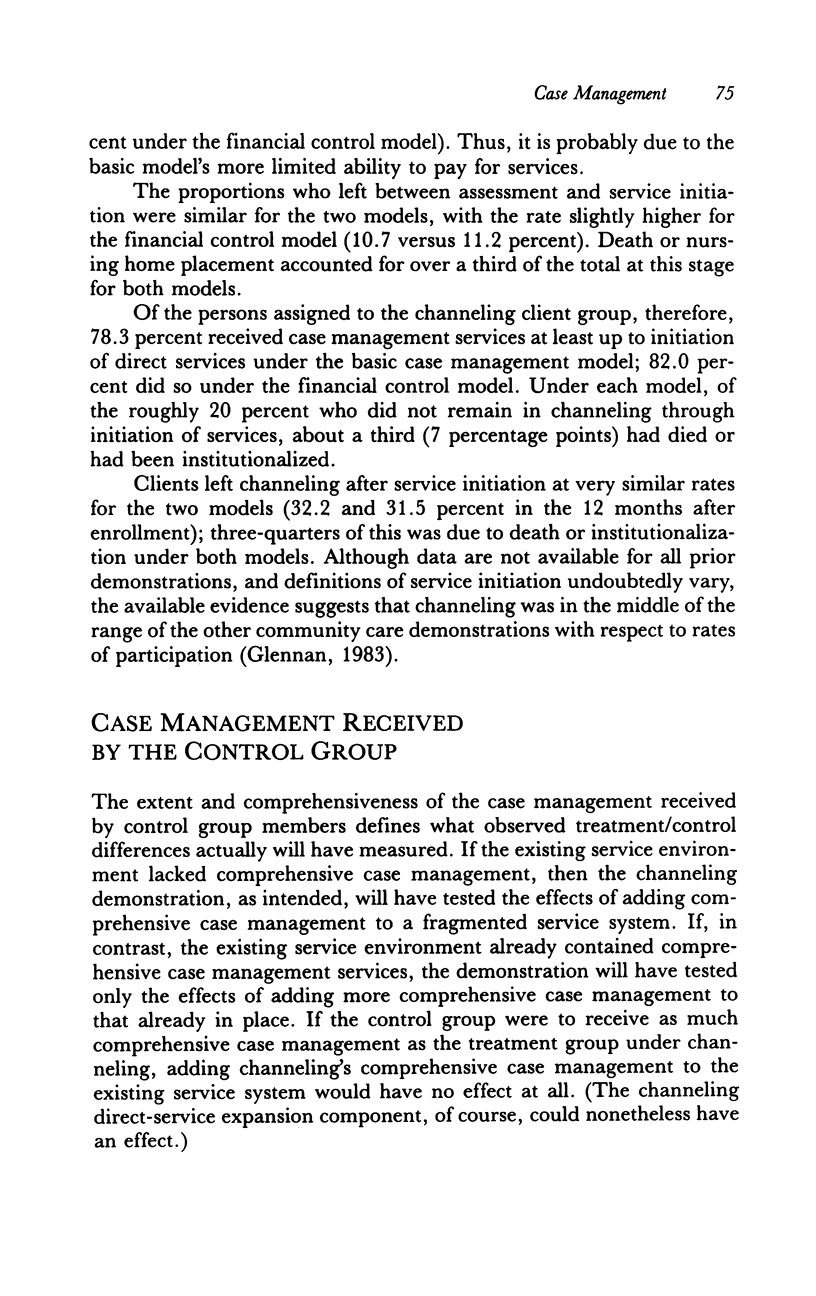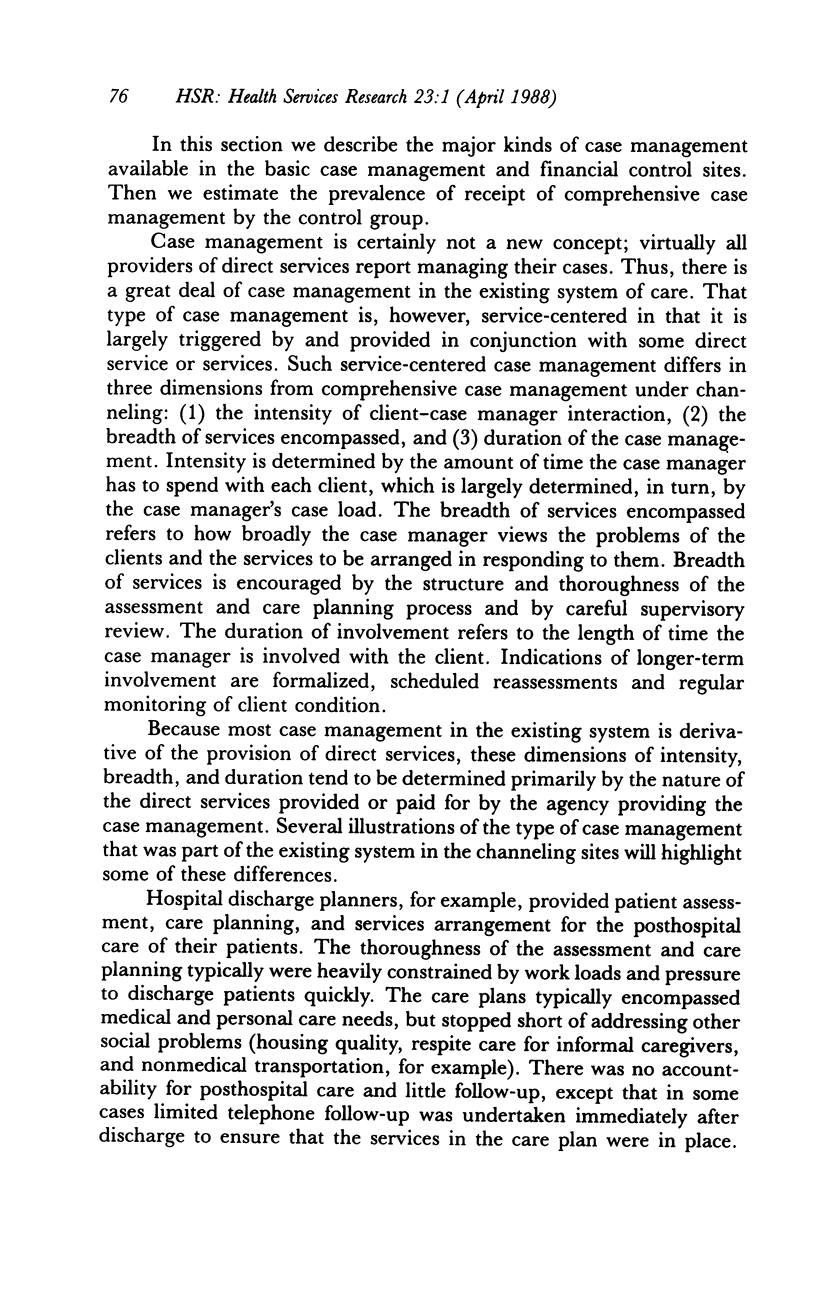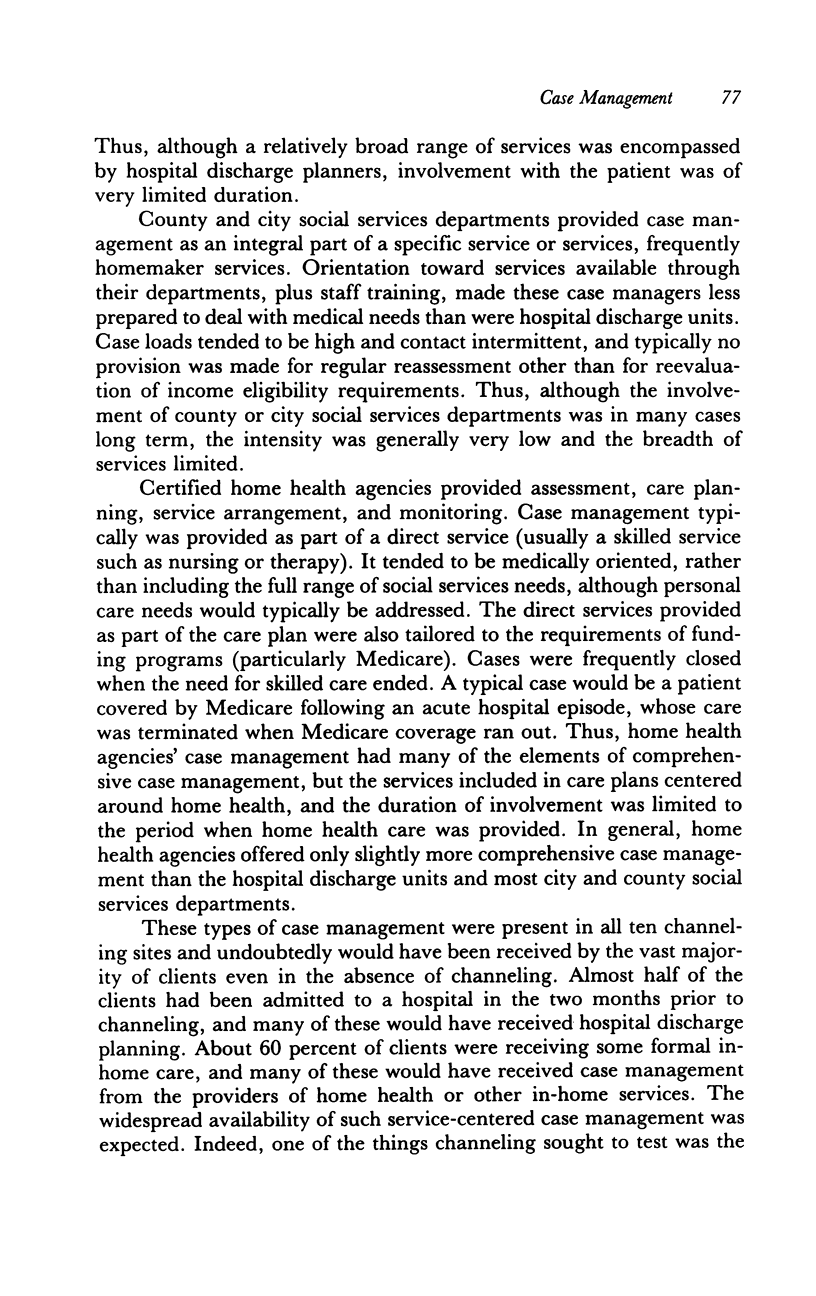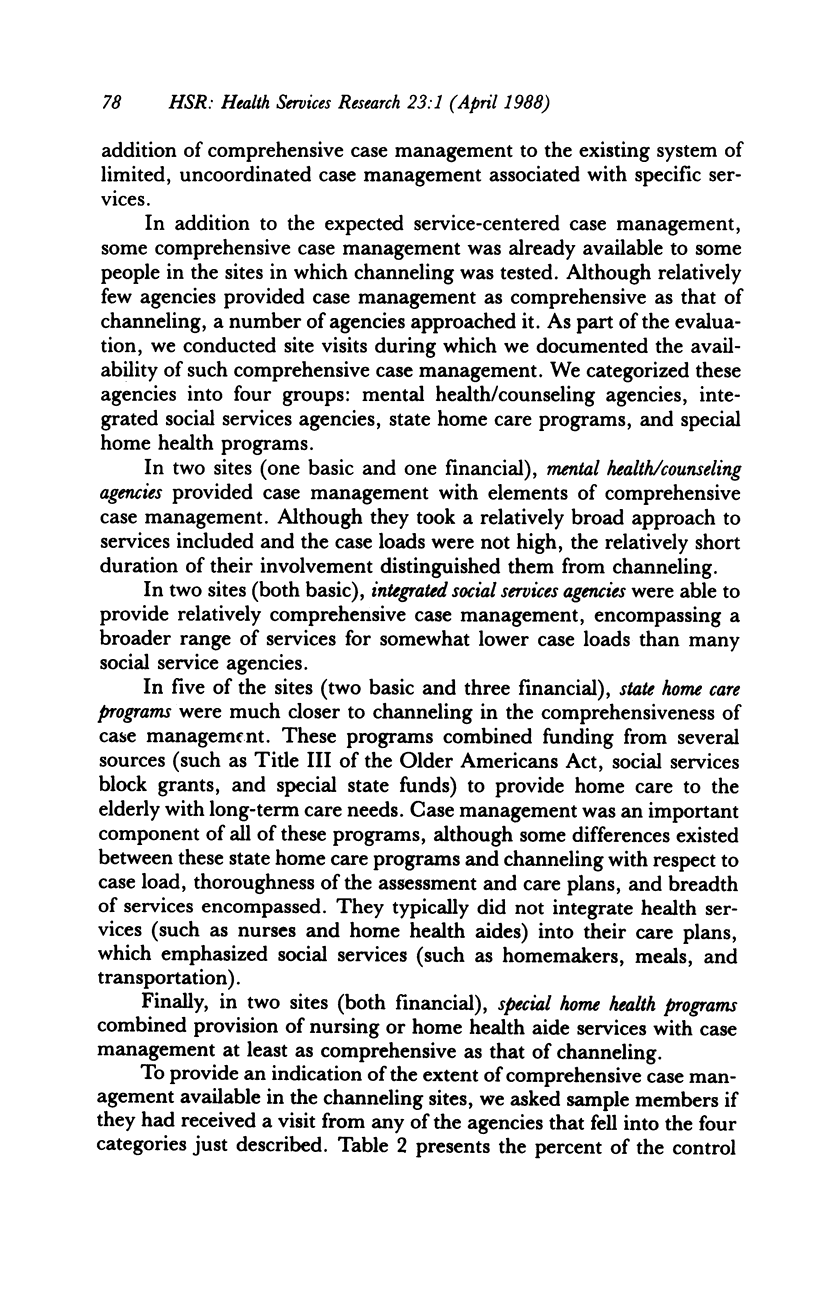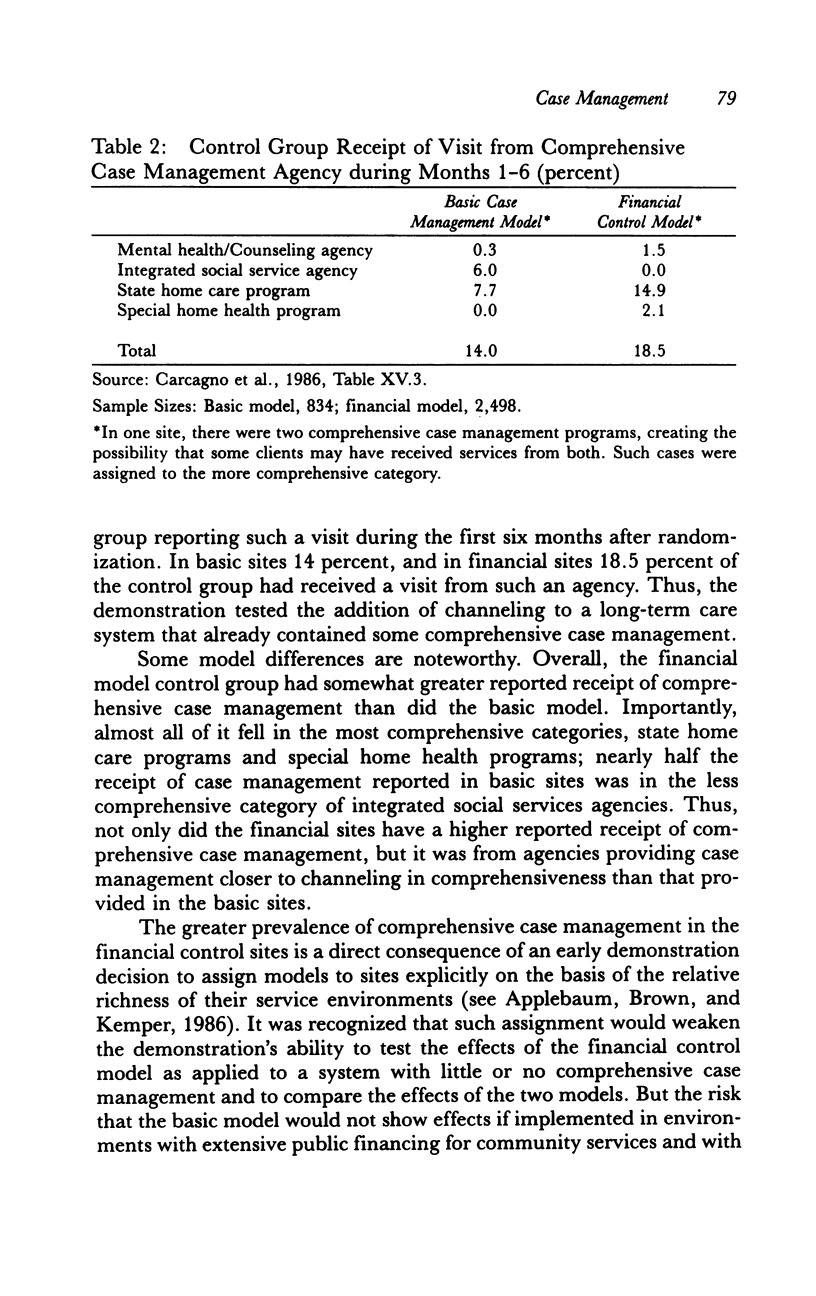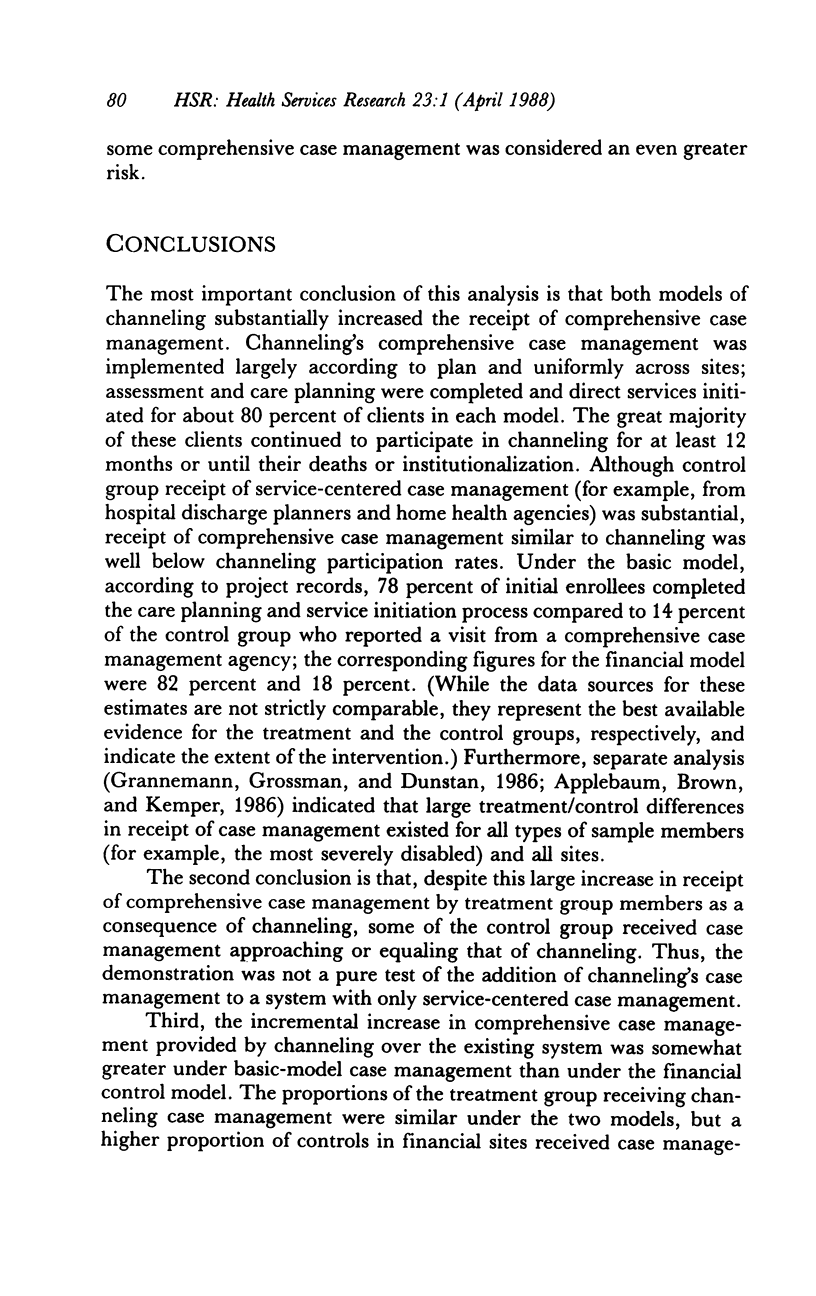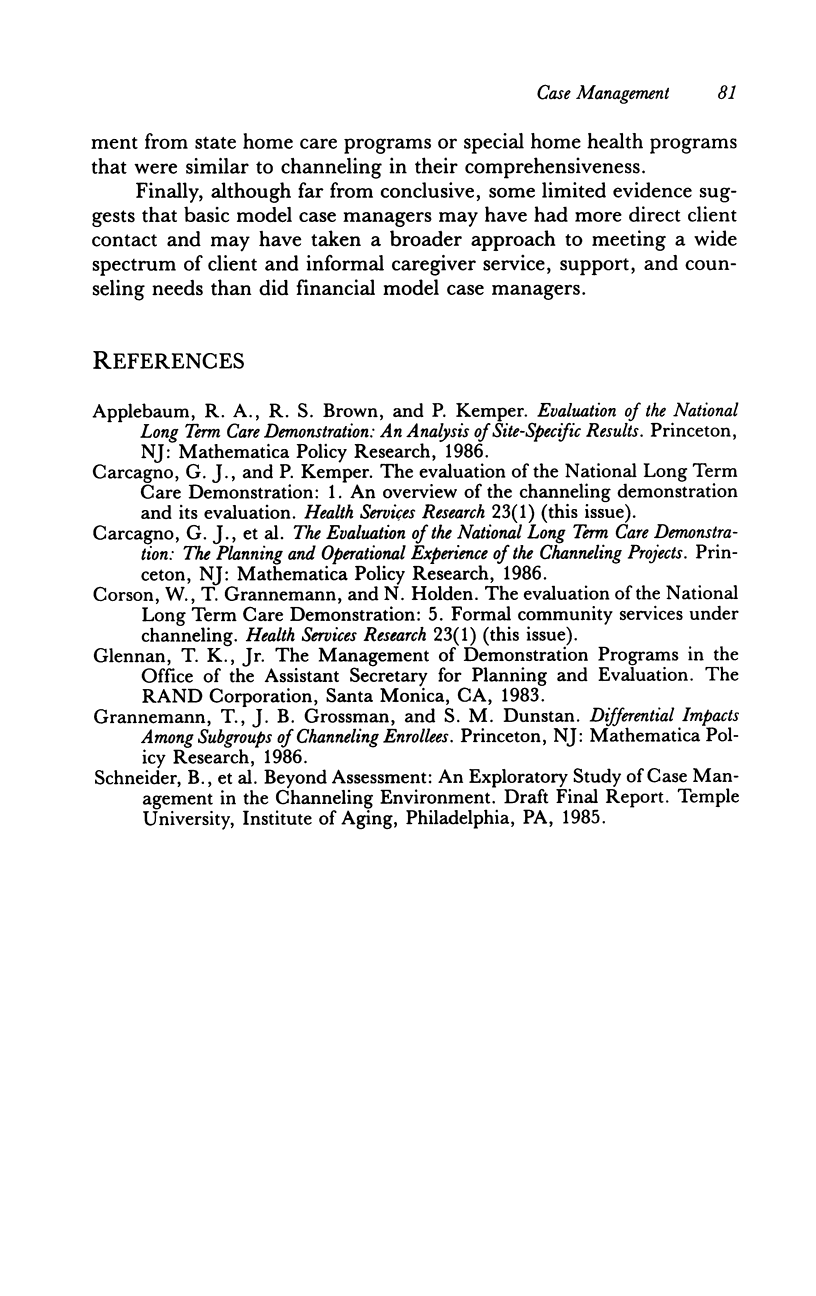Abstract
The channeling demonstration involved provision of comprehensive case management and direct service expansion. This article considers the former. Under both models, comprehensive case management was implemented largely as intended; moreover, channeling substantially increased the receipt of comprehensive care management. However, channeling was not a pure test of the effect of comprehensive case management: roughly 10-20 percent of control group members received comparable case management services. This was particularly the case for the financial control model. Thus, the demonstration was not a test of case management compared to no case management; rather, it compared channeling case management to the existing community care system, which already was providing comprehensive case management to some of the population eligible for channeling.
Full text
PDF